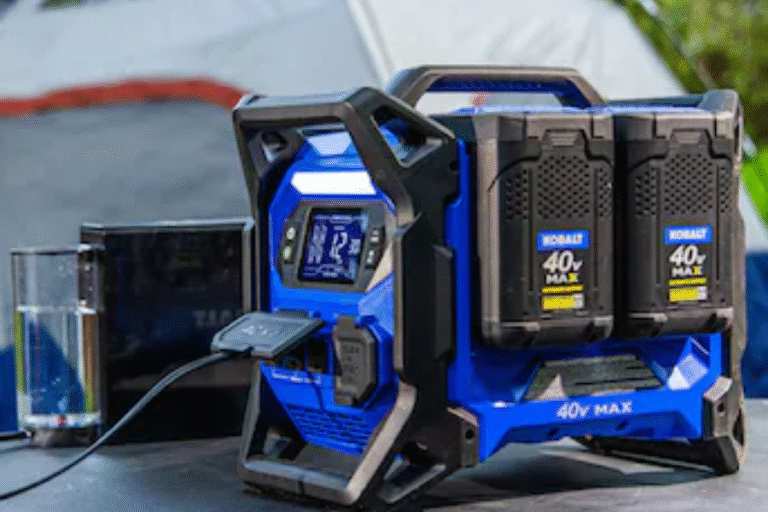
Fujitsu MAP3367NP
The Fujitsu MAP3367NP is a high-performance hardware solution, originally designed to serve enterprise environments with its Ultra320 SCSI interface. However, connecting this legacy drive to modern systems via USB ports can be quite a challenge. This guide will walk you through the steps, tools, and strategies necessary for a smooth connection.
Fujitsu MAP3367NP Overview
The Fujitsu MAP3367NP is a 36GB Ultra320 SCSI hard drive, celebrated for its exceptional reliability and performance. With a spindle speed of 10,000 RPM and an 8MB cache, it’s engineered for efficient data storage and retrieval, making it ideal for enterprise-level operations. The 68-pin SCSI connector ensures high-speed data transfer, which was a key reason it became a favored choice for servers and workstations during its prime.
Key Specifications:
- Capacity: 36GB
- Interface: Ultra320 SCSI
- Connector: 68-pin SCSI
- Spindle Speed: 10,000 RPM
- Cache Size: 8MB
Typical Applications:
- Archiving large datasets
- Supporting enterprise server operations
- Maintaining legacy systems
Difficulties in Connecting SCSI Drives to Modern USB Ports
While the Fujitsu MAP3367NP offers robust performance, connecting it to a USB port on modern computers introduces several challenges.
- Interface Compatibility: The communication protocols of SCSI and USB differ significantly, which requires a specialized adapter or converter to bridge the gap.
- Power Demands: SCSI drives typically need separate power supplies, as USB ports may not provide enough power.
- Driver Support: Modern operating systems often lack native drivers for SCSI interfaces, making it necessary to install additional software.
Understanding the SCSI Interface
Gaining a solid understanding of how SCSI works will help you navigate the connection process more easily.
What Is SCSI?
SCSI (Small Computer System Interface) is a widely used set of standards designed for connecting and transferring data between computers and peripheral devices. Known for high-speed data transfer and its ability to handle multiple devices at once, SCSI was particularly popular in enterprise environments.
SCSI vs. USB: Key Differences
SCSI and USB are fundamentally different in their approach:
- USB is designed to be plug-and-play, while SCSI requires careful setup, including configuring device IDs and termination settings.
- SCSI supports multiple devices on a single bus, whereas USB connects devices individually.
Why Should You Connect a SCSI Drive to a USB Port?
Adapting an older SCSI drive for USB use can offer several advantages:
Advantages of Reviving Legacy Hardware
By connecting the Fujitsu MAP3367NP to a USB port, you can:
- Access older data that would otherwise require outdated systems.
- Extend the usefulness of a reliable and durable SCSI drive.
Common Use Cases
These adapters come in handy for:
- Recovering critical data from legacy enterprise drives.
- Transferring vital files from outdated systems to modern hardware.
Tools and Hardware Needed for Connection
To successfully hook up your Fujitsu MAP3367NP to a USB port, you’ll need the right tools and hardware.
USB-to-SCSI Adapters
Converters such as the StarTech USB to SCSI adapter allow seamless communication between the SCSI drive and modern USB ports, bridging the gap between old and new technology.
SCSI Controller Cards
Cards like the Adaptec 29160 or Adaptec 29320 can enable direct connection of SCSI drives to a computer’s motherboard, providing the necessary interface for legacy devices.
Suggested Cables for Optimal Connection
Using high-quality 68-pin HD SCSI cables ensures that the connection between the drive and the adapter or controller remains stable and efficient.
Power Supply Needs
Since SCSI drives often require more power than a USB port can provide, ensure that the Fujitsu MAP3367NP is connected to a dedicated power source when setting it up, particularly for external configurations.
With the right knowledge and equipment, you can successfully adapt the Fujitsu MAP3367NP to modern USB systems and continue to benefit from its high-speed performance and reliable data storage capabilities.
How to Connect the Fujitsu MAP3367NP to a USB Port?
In this section, we will walk you through the entire process of connecting your Fujitsu MAP3367NP hard drive to a USB port, ensuring that the setup is smooth and straightforward.
Preparing the Fujitsu MAP3367NP and Required Adapters
Before beginning the connection process, it’s essential to ensure that your Fujitsu MAP3367NP is in working condition.
- Test the Drive: If possible, connect the drive to a legacy system to verify that it functions correctly.
- Attach the SCSI Cable: Connect the 68-pin SCSI cable from the drive to the USB-to-SCSI adapter.
Powering Up the Fujitsu MAP3367NP
Powering the Fujitsu MAP3367NP properly is crucial for successful operation.
- Connect an External Power Source: If the drive requires external power, attach the appropriate power adapter.
- Match Voltage: Double-check that the power supply voltage aligns with the MAP3367NP’s requirements to avoid damage.
Plugging Into the USB Port
Once the drive is powered up, it’s time to connect it to your computer.
- USB Adapter Connection: Insert the USB end of the adapter into an available USB port on your system.
- System Recognition: Wait for your computer to recognize the drive. If necessary, install any required drivers.
Software Setup and Driver Installation
Proper software configuration ensures your Fujitsu MAP3367NP runs optimally after it’s connected.
Installing Necessary Drivers
To ensure the system works seamlessly with the SCSI drive, you’ll need the right drivers.
- Driver Installation: Visit the website of the USB-to-SCSI adapter manufacturer to download the latest drivers.
- System Restart: After installation, restart your computer to complete the setup process.
Tools for File Management and Diagnostics
Once the drive is connected, there are useful software tools to help manage the drive and keep it running smoothly.
- ActiveSMART Software: This tool helps monitor the health and performance of your Fujitsu MAP3367NP, providing insights into its operation.
- Disk Management Tools: Use macOS’s Disk Utility or Windows’ Disk Management to partition, format, and manage the drive’s storage.
Troubleshooting Tips for Common Issues
If you run into problems during the setup, follow these troubleshooting steps to resolve them.
Addressing Compatibility and Driver Issues
If your computer doesn’t recognize the drive, it may be due to driver or compatibility problems.
- Driver Updates: Ensure that you have the most recent drivers for both the adapter and the drive.
- Adapter Compatibility: Verify that the USB-to-SCSI adapter you are using supports Ultra320 SCSI drives like the Fujitsu MAP3367NP.
Resolving Power or Connection Problems
If you encounter power or connection issues, here’s how to solve them.
- Powered USB Hub: If the direct connection isn’t working, try using a powered USB hub to ensure the drive gets enough power.
- Cable and Adapter Check: Inspect cables and adapters for damage or poor connections.
Maximizing Performance
For optimal functionality and longevity of the Fujitsu MAP3367NP, consider these performance tips.
- Avoid Overheating: Do not keep the drive running for extended periods without breaks to prevent overheating.
- Use Diagnostic Software: Regularly run diagnostic checks to maintain the drive’s health and performance.
Evaluating USB-to-SCSI Adapters and Cables
Choosing the right hardware is essential to ensure a stable connection between the Fujitsu MAP3367NP and your system.
Comparing Adapters and Their Features
Adapters vary in price and features, so it’s important to find the right one for your needs.
- Budget-Friendly Options: Basic adapters typically cost around $50, providing essential functionality.
- High-End Options: Premium models with advanced features can cost over $150 but offer better performance and reliability.
Selecting the Right Adapter
When choosing an adapter, ensure it meets the following criteria:
- Ultra320 SCSI Support: Look for adapters that specifically support Ultra320 SCSI drives.
- 68-pin Connector Compatibility: Make sure the adapter is equipped to handle 68-pin SCSI connections for the Fujitsu MAP3367NP.
Exploring Alternative Solutions for Data Access
If connecting the Fujitsu MAP3367NP to a USB port proves too complicated, consider these alternative options.
Professional Data Recovery Services
If you’re unable to set up the drive on your own, professional data recovery services can help extract important information from the drive.
Upgrading to Modern Storage Solutions
For better performance and compatibility, think about transferring the data from the Fujitsu MAP3367NP to newer storage options such as SSDs or modern HDDs.
Tips for Maintaining Legacy Hardware
Preserving the longevity of your Fujitsu MAP3367NP will ensure it continues to serve its purpose for years.
Prolonging the Life of Your SCSI Drive
Proper care can significantly extend the operational life of your drive.
- Storage Conditions: Keep the drive in a cool, dry location to prevent damage.
- Protective Measures: Use dust covers to shield the drive from debris and environmental factors.
Regular Maintenance and Updates
Routine diagnostics and firmware updates are crucial for keeping the Fujitsu MAP3367NP in top condition.
- Monitoring Tools: Employ software to keep an eye on the drive’s performance and spot potential issues early.
- Firmware Updates: Regularly update the firmware to ensure compatibility with modern systems and improve functionality.
Key Facts about the Fujitsu MAP3367NP:
1. Drive Type: The Fujitsu MAP3367NP is a 36GB hard drive that utilizes the Ultra320 SCSI interface for fast data transfer.
2. Performance: It has a spindle speed of 10,000 RPM, providing high performance in terms of data read/write speeds, making it suitable for enterprise and high-demand applications.
3. Cache Size: The drive comes with 8MB of cache, which helps improve data access speed by temporarily storing frequently used data.
4. Connector Type: It features a 68-pin SCSI connector, which was commonly used in high-performance enterprise storage systems at the time of its release.
5. Target Audience: The Fujitsu MAP3367NP was designed primarily for enterprise environments, including servers and workstations, due to its reliability and speed.
6. Data Transfer Speed: It supports Ultra320 SCSI, allowing for data transfer speeds up to 320 MB/s, which is significantly faster than earlier SCSI standards.
7. Reliability: Known for its durability and performance, the Fujitsu MAP3367NP was often chosen for mission-critical applications where uptime and data reliability are paramount.
8. Applications: It was commonly used for data archiving, enterprise server applications, and legacy system maintenance.
9. Form Factor: The drive is a 3.5-inch form factor, which is typical for enterprise hard drives.
10. Legacy Hardware: Though now considered outdated by modern standards, the Fujitsu MAP3367NP remains useful for maintaining legacy systems or accessing archived data.
Final Thoughts
Successfully connecting the Fujitsu MAP3367NP to a USB port offers a great way to revive and utilize a legacy drive. With the right setup and regular maintenance, you can continue to benefit from the robust performance and reliability of this SCSI technology. By following these steps and best practices, your drive will continue to serve you efficiently for the long term.
Frequently Asked Questions
Can I connect a SCSI drive directly to a USB port?
No, you cannot directly connect a SCSI drive to a USB port. You will need a USB-to-SCSI adapter or a SCSI controller card to establish a proper connection.
Which USB-to-SCSI adapter is ideal for the Fujitsu MAP3367NP?
For the Fujitsu MAP3367NP, it’s best to use an adapter that supports Ultra320 SCSI and has a 68-pin connector, such as those offered by StarTech.
How can I fix driver-related issues with a SCSI drive?
To resolve driver issues, make sure you’re using the most current drivers from the manufacturer’s website. You should also verify the device manager for any error messages related to the device.
Is upgrading from a SCSI drive to newer storage systems worth it?
Yes, transferring data from a SCSI drive to modern storage solutions like SSDs or newer HDDs is a good idea for better compatibility and improved long-term performance.
Discover the latest news and updates on The Blog Verge





